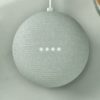The Pixelbook is striking, smart, and unlike anything Google has previously made. Should this powerful and pricey machine be your new daily computer? Chromebooks have been mostly budget-friendly computers aimed towards school kids and frugal techies. Google may be exploring a new niche with the Pixelbook, a sleek laptop that comes with a hefty price tag. Is this ultra-thin, 2-in-1 machine a capable rival against other more popular laptop-tablet hybrids (e.g. Apple’s iPad Pro and Microsoft’s Surface Pro), though?
A Surprising, New Direction
The Pixelbook is Google’s third attempt at its Chromebook Pixel laptops. This time around, the tech giant is taking on a new design and approach.
While the first two Pixel laptops weren’t shabby machines by any stretch of the imagination, they felt more like a novelty against the sea of cheap, dependable Chromebooks. The Chrome OS hasn’t matured greatly and the laptops were basically reference-designs back then.
The Pixelbook is when the OS and the hardware have seemingly come full circle. Google now firmly believes its latest, high-end hybrid laptop can aim at a wider audience and go head-to-head with far more established laptop manufacturers.
Basic Pixelbook Specifications
Looking at the convertible laptop’s hardware tells us one thing: Google wants the Pixelbook to be taken seriously as a fully fledged laptop. It’s not hard to see why.
Dimensions | 0.41 x 11.43 x 8.69 inches |
Display | 12.3-inch, 2400 x 1600 LCD Touchscreen, 400 nits, 72 percent NTSC color |
Keyboard | Backlit |
Camera | 720p |
Built-In Accessories | Four microphone & two speakers |
RAM | 8GB |
Storage | 128GB |
Processor | 7th-gen Intel Core i5 |
Ports | 2 USB-C with fast-charging, headphone jack |
Battery | 41Wh |
Charger | 45W |
Bluetooth | 4.2 |
Weight | 2.45lbs |
Price Points
The higher you go in terms of the price, the better the Pixelbook gets. Here’s a quick look at the difference for each of Pixelbook’s different price ranges:
Price | Specification |
$999 | 8GB RAM / 128GB SSD / 7th-gen Intel CoreTM i5 processor |
$1,199 | 8GB RAM / 256GB SSD / 7th-gen Intel CoreTM i5 processor |
$1,649 | 16GB RAM / 512GB NVMe / 7th-gen Intel CoreTM i7 processor |
Impressive Design
Incredibly well-built, the Pixelbook is a stunning piece. It’s made of aluminum with a generous dose of striking symmetry throughout. It also has a glass shade on the back of the screen that sort of mirrors the ones you find on Pixel phones. Overall, it’s simply gorgeous.
Flip the screen over and the beautiful laptop turns into an amazing tablet. It may not be the most groundbreaking of designs, but it impresses just as well when you see the Pixelbook do its thing.
A Hybrid Machine Unlike Any Other
The Pixelbook’s immediate rivals —the Surface Pro and iPad Pro—are basically tablets with attachable keyboards and stylus. On the other hand, the latest Google laptop is essentially a touchscreen laptop that doubles as a tablet.
Like most convertible laptops, Pixelbook’s screen flips around a full 360° whenever it goes into tablet mode. What’s unique with the high-end Chromebook is that you can angle it so the keyboard doubles as a stand.
This versatility in form makes it quite convenient to kick back and watch a movie on the Pixelbook. That’s certainly a huge upgrade over its predecessor, the Chromebook Pixel 2, which couldn’t readily transform into a tablet.
Better Hardware
Seeing the massive success of Chromebooks in the education sector, Google is setting its sights on a bigger challenge. And by the looks of it, the Pixelbook has what it takes to go toe-to-toe with notebooks of the same price from established laptop makers.
Not only is it surprisingly lightweight (only 10mm thick and weighs under 2½ lbs), it also houses a full-powered Intel i5 Kaby Lake processor. What’s even more impressive is the fact that its fanless despite having quite a powerful chip onboard. It may sound ludicrous, but even Pixelbooks with the more powerful i7 chip don’t have built-in fans.
The Pixelbook can also run 10 hours on a single, full charge. It supports fast charging, too. With its 45W charger, the laptop hybrid can charge up to two hours’ worth of power in only 15 minutes. Google’s newest Chromebook comes with two USB-C ports.
As for the keyboard, anyone will easily fall in love with the keys being a little less clickety-clack than a MacBook’s keyboard. They aren’t too soft like the ones you find on the Surface Pro keyboard. Plus, they’re backlit not like the ones you see on most Chromebooks.
Despite racking up points in the hardware department, we still find the bezels around the Pixelbook’s 12.3-inch touchscreen a little too large. Google says that the quirk was by design so it’s easier to hold the Chromebook in tablet mode, though.
Pixelbook Pen and Google Assistant
A highlight on the high-end Chromebook is its seamless integration of the Pixel Pen. It may seem like it doesn’t differ much from the stylus pen that Apple and Microsoft are offering, but that’s far from the truth.
With the Pixel Pen, you can easily activate the Assistant using some clever gestures. Encircle an image or markup your text using the Pixel Pen and it’ll make the Assistant look up relevant info. Imagine watching news clips or movies and using the Pixel stylus to recognize actors. Now, hit the Assistant button on the pen and the AI will give you suggested results based on whatever is found on your screen at the moment.
The pen’s API bypasses a lot of the Chrome OS’ layers, too. In other words, apps that use the pen’s API can read its input more directly and this should make note-taking a breeze on the Pixelbook. The Chrome OS also utilizes machine learning to anticipate where the pen is going to reduce the perception of a lag on the device.
On the hardware side of things, the Pixelbook pen uses an AAA battery for power and doesn’t require Bluetooth pairing. The former means you could be using the stylus for about a year before it runs out of juice. The latter, meanwhile, means you won’t have to awkwardly plug the pen or any of its components into the laptop to charge. And it seems like a traditional Wacom stylus that has support for both angle and pressure. Handwriting on the Pixelbook has a more natural feel to it, as well.
Chrome OS
Little by little, Google has expanded what the Chrome OS can do over the years. What started out as a browser has become a very capable operating system today.
Among the most noteworthy achievements of the OS that you’ll see on the Pixelbook is its newly added support for Android apps. Google’s high-end notebook should be capable of running Android apps and regular Chrome Web apps side-by-side just fine. That’s probably why there are that much RAM and storage crammed into the basic Pixelbook. After all, mobile media content tends to sync and add up quickly.
On the Pixelbook, you can also dynamically resize Android apps like a regular window. Flip over to tablet mode and those same apps run only on full-screen.
Should You Buy It?
Looking for a sleek, convertible laptop with a very smart and capable software? Pixelbook should be a solid pick. The fact it readily morphs into a somewhat bulky tablet in a pinch makes it an even more capable everyday gadget. Although it’s admittedly a well-built machine, the Pixelbook comes at a hefty price. Invest in one and you’ll have little regrets, though.

